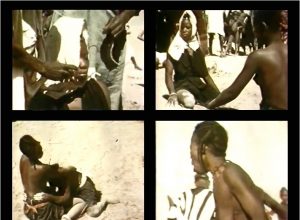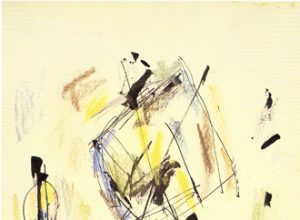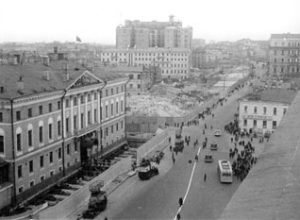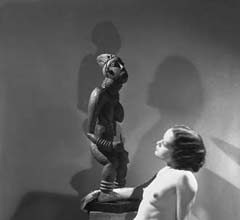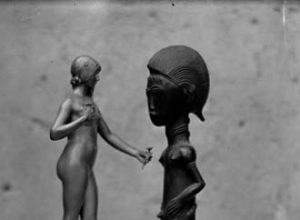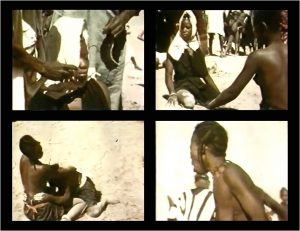
Jean Rouch discovered the rituals of possession among the Songhai populations of Niger when he was a colonial public-works engineer before quitting that job to devote his life to research. He began filming in order to document ceremonies during which things are “activators of affects” for purposes of healing. Clara Pacquet notes the correspondences between his cinematic efforts, wherein humans become things and things become creatures, and European literature (Georges Perec, Alain Robbe-Grillet, Michel Foucault, and Jean Baudrillard), which was confronted with the spread of mass-produced, machine-made objects.
Laurence Bertrand Dorléac
Animism and Modernity:
Jean Rouch
on Things
Clara Pacquet
“I make my films as one would sketch a drawing of a bridge.”[ref]Jean Rouch, in a 1992 interview by Pierre-André Boutang: Jean Rouch raconte à Pierre-André Boutang, 2004.[/ref]
Jean Rouch, 1992
It was as a colonial public-works engineer that Jean Rouch went for the first time, in 1941, to sub-Saharan Africa. Steeped in the world of Surrealism, he had already taken courses in Ethnology at the Musée de l’Homme (Paris’s “Museum of man”). In the tradition of Dadaism, the Surrealists took an interest in the magical and spiritual powers of objects connected with danses, rituals, and beliefs, and they initiated a new, more dynamic, more open, more uncertain way of relating to signs and objects as well as to manifestations of disorder.
A Gay Science
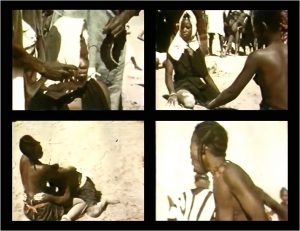
Fig. 1: Jean Rouch, Initiation à la danse des possédés, 1949. Color, 16 mm, 22 min. Still images. © CNRS/CFE/Jocelyne Rouch.
Around the edges of the work sites he managed, Rouch discovered the possession rituals of the Songhai populations of Niger. He gathered together his observations and published, in 1943, a first article, “Aperçu sur l’animisme songhay,” in the review Notes Africaines.[ref]“Aperçu sur l’animisme songhay,” Notes Africaines (Dakar), 1943: 4-8.[/ref] Quitting his job as an engineer, Rouch began to write a dissertation at the Sorbonne, supervised by Marcel Griaule, on the theme of the water genie among the Songhai. As an ethnographer, Rouch understood quite quickly that the medium of cinema was going to become indispensable for his documentation of ceremonies. For him, the camera was going to become a near-magical object, analogous to an organ, the reference here being to the Cine-Eye of Dziga Vertov. In 1949, Rouch presented Initiation à la danse des possédés (Initiation into possession dance) at the Musée de l’Homme. This film shows a healing ceremony: a young woman possessed in an inadvertent way by two genies has to learn, through dance, to control—that is to say, to mount—these genies and become possessed only when requested to do so by priests. The voice-over, performed by Rouch himself, at times describes the actions of the ritual’s protagonists in order to facilitate the viewer’s understanding and at other times offers interpretative hypotheses, like the remark suggesting a parallel between the spectators of the ritual in the film and the spectators of the film in the projection room: “and in these dances, it is often the spectators that play the role of actor.” The film was presented at the Festival du film maudit (Festival of accursed film), where it received a prize. For the artists and the filmmakers who gathered at Biarritz, the film was a revelation: they were filled with enthusiasm, in the Dionysian sense of the term, summoned by a novel form of Nietzschean gay science.
Possession and Migration
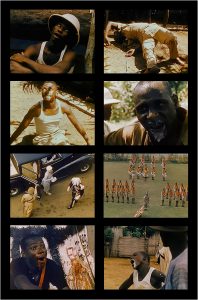
Fig. 2: Jean Rouch, Les Maîtres fous, 1954. Released in1957. First Prize for Ethnographical, Geographical, Tourist, and Folklore Films at the 1957 Venice International Festival. Color, 16 mm, 28 min. Still images. © Les Films du Jeudi/Les Films de la Pléiade. One can see the analogy Rouch is making between trance states and the exercise of colonial power.
Rouch’s success among the heirs of Surrealism was decisive for what followed. In 1950, in Paris, when he was developing an interest in Antonin Artaud’s Theater of Cruelty,[ref]See Rouch’s text, “L’Autre et le Sacré: jeu sacré, jeu politique,” Jean Rouch: Cinéma et anthropologie (Paris: Cahiers du cinéma, 2009), p. 30.[/ref] Rouch discovered glaring similarities between the corporeal techniques advocated by Artaud and the trance phases he had been able to observe during Songhai possession rituals. For Artaud, cruelty involved the usage of objects to attain a degree of bodily intensity. As accessories, costumes, and instruments used during rituals, dances, and ceremonies, but also as role reversals played out between animate and inanimate entities, the things involved become activators of affects whose role proves to be of a healing nature. Such healing is often tied to a practice of representation on the level of exaggeration and mockery that may go so far as caricature. Filmed in 1954 and brought to the public’s eye in 1957, the film Les Maîtres fous (The Mad Masters) fits into this fascination with possession whose therapeutic nature Rouch was exploring.
For, the possessed person is not a madman; he masters this state with the help of techniques requiring a period of apprenticeship. Rouch presented the possession cult of the Haouka, during the course of which initiates embody, in a grotesque manner, the symbols of colonialism through the invocation of new gods: those of technology, the city, and force. The followers of this cult were Songhai Nigerian immigrants living in Accra, the capital of the Gold Coast. Located predominantly on the bottom rungs of the social ladder, these people were forced to find methods for adapting and integrating themselves into society. During these ceremonies, the possessed individuals were transformed, via a trance state, into symbolic caricatures of British colonial-power personalities.
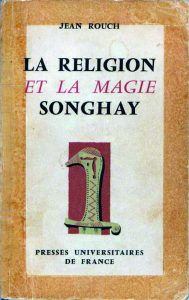
Fig. 3: Jean Rouch, La Religion et la magie Songhay (Paris: Presses Universitaires de France, 1960). © Jocelyne Rouch. Book cover made on the basis of his thesis.
According to Rouch, this cult was the African expression of the West. The title of the film is a play on words, for it is indeed the British masters that are mad. First shown in 1955 at the Musée de l’Homme without sound in a first cut but accompanied by live improvised commentary from Rouch in the projection booth, the film was later to be marketed commercially. While it was violently rejected by the ethnologists present at the Musée screening and deemed “intolerable” or “racist,” it encountered real success from an audience of nonspecialists and won the Grand Prize at the 1957 Venice Biennale. Furthermore, it revolutionized the ethnographic approach to rituals. The fact that the participants in the Haouka cult were migrants is of key importance. These ceremonies could not be understood outside of the phenomenon of migration, and it is precisely this aspect that interested Rouch: adaptation, mixture, and the merger of ancestral genies with modern genies, which break with an essentialist approach to cultures that used the concept of “tradition,” and which break, too, with a hermetic view of the relations between self and other.
Between Continents
When he made The Mad Masters, Rouch had been observing the Songhai since his first visit to Niger in 1941. These people make reference, simultaneously, to a variety of religions: ancestor worship, worship of the genies of specific sites (Zin), worship of cosmological divinities (Holey), and Islam.
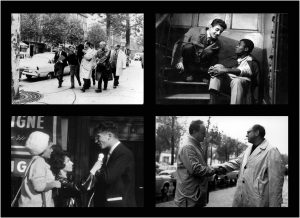
Fig. 4: Jean Morin and Jean Rouch, Chronique d‘un été, 1960-1961. B/W, 16 mm, 86 min. International Critics Prize at the 1961 Cannes Festival. Still images. © Argos Films.
Rouch strove to understand how these systems were intertwined and wished, in return, to alter the gaze Europeans bring to bear on Africa and on themselves. Chronique d’un été (Chronicle of a summer), a cult film he codirected in 1960-1961 with Edgar Morin, is exemplary of this back-and-forth movement between continents. With this film, Rouch—basing himself upon an idea from Morin, who asked him why he never came to study the Parisian “tribe”—continued his operation of decanting one culture into another. The impact was quite strong, for the experiment was performed in Europe, with actors who looked like the European audience. It is striking to note the similarities between Chronique d’un été and Perec’s novel Things: A Story of the Sixties. Four years separate the release of the film from the appearance of that book, and the couple imagined by Perec seems drawn straight out of Rouch and Morin’s documentary. The doubts of an entire generation stretching from the Algerian War to that generation’s connection with things and its relation to everyday life are addressed there. In the background lies a question: Is man’s connection with things in contemporary industrialized societies devoid of meaning? A fathomless difference separates the use of objects in Songhai rituals from Europeans’ relationship with things at a time when industrialized society is ruled by a market economy. Though occurring at a less rapid pace than in the West, 1950s Africa nevertheless experienced the capitalism being imported by the colonizers, just as it also experienced the introduction of machinery into human affairs. What interests Rouch is the way in which the African peoples he was able to observe continually synthesized new responses a European eye and mind would never have suspected.
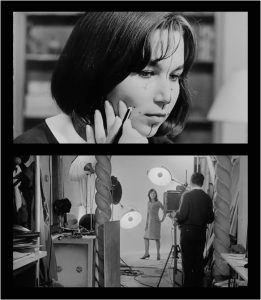
Fig. 5: Jean Rouch, Les Veuves de quinze ans (Marie-France et Véronique) in La Fleur de l’âge ou les adolescentes, 1963-1964. B/W, 35 mm, 25 min. Still images. © Les Films du Jeudi/Les Films de la Pléiade. In this short film about adolescence, Rouch oscillates between the representation of free female desire and the image of the woman as object. He alternates, for example, between the staging of a sort of “tribal” primitiveness (mixing more or less ethnographic sources with jazz music) with the staging of a fashion shoot, the female body having become here an object of masculine lust and advertising covetousness.
The Haouka sect and their worship of the genies of technology and colonization are exemplary of these adaptations or constant rearrangements of what anthropologists contemporary with Rouch perhaps too hastily have called tradition. One’s connection with one’s “ancestors” is in perpetual motion, as it is porous to changes brought about by modernity. And it is precisely in this spot that Rouch recognized the strength of the African continent, and even its “extreme” modernity.[ref]Some people will later say postmodernity, for similar practices of mixing together heteroclite things can be interpreted as the symptom of a sidelining of every evolutionary paradigm for history, as well as a disappearance of grand narratives that invalidates the usage of such categories as tradition, modernity, progress, and so on. When observing the Haouka, for example, one is in the presence of a multitude of narratives that, in a state of incessant becoming, do not cease to be reconstituted ad infinitum, at a remove from any thoughts of purity or originality. The very connections between copy and original find themselves profoundly altered.[/ref]
A Taste for Things
In the late 1950s, with his Mythologies Roland Barthes inaugurated a novel way of looking at the material world and its symbolic impact upon subjects. According to Barthes, an object speaks; it is a system of signs, while things as a whole form a world, nay even a cosmogony.[ref]See “Poujade and the Intellectuals” and “Myth on the Right,” in Roland Barthes, Mythologies: The Complete Edition in A New Translation, trans. Richard Howard and Annette Lavers (New York: Hill and Wang, 2012).[/ref] The modern myths embodied by the accessories of everyday life convey the order of the capitalist world and tend to take as natural what pertains to an ideological construction. Myth may be said to be an attempt to neutralize forces deemed in opposition and contrary to that order. The Sixties bear witness to a heightened taste for this issue. Besides Perec, Robbe-Grillet advocated in 1963 for a “new novel,” that is to say, one conscious of a reified society in which humans have become things among other things, while Foucault published in 1966 Les Mots et les choses (Words and things), later translated into English under a title the philosopher would originally have preferred: The Order of Things. In 1968, it was Jean Baudrillard’s turn to pursue this reflection with his work of political semiotics: Le Système des objets: la consommation des signes (translated into English as: The System of Objects). Rouch’s films and his research investigations into animism developed within this environment. While they were nourished by collective questions that were contemporaneous thereto—the atrocities of war, colonization, Capitalism vs. Marxism—they also served to initiate a reflection around the question of the world and of how it is represented, concerning specifically the difference between the same and the other, and of how seriously one can take civilizational progress. In affinity with Barthes, who saw in cars a “pure magical object,”[ref]Roland Barthes, “The New Citroën,” in Mythologies.[/ref]
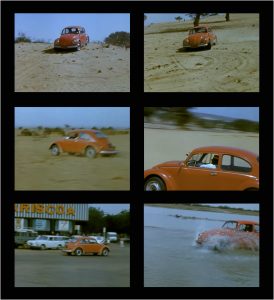
Fig. 6: Jean Rouch, VW Voyou, 1973. Color, 16 mm, 19 min. Still images. © CNRS/CFE/Jocelyne Rouch.
Rouch took an interest in the life of this machine within a non-European context where the physical and spiritual levels are mixed together.[ref]Such a questioning would not cease to germinate among philosophers, writers, and filmmakers in the following decades. Let us quote, here, the dedication of Robert Linhart’s 1978 book L’Établi (translated into English in 1981 as The Assembly Line): “To Ali, son of a marabout and laborer at Citroën.” Linhart worked as a semi-skilled worker (OS) in a factory before describing workers’ labor conditions. He would become a source of inspiration for Jean-Luc Godard in his 1978 television series France/tour/détour/deux/enfants. For its part, the Citroën automobile appeared several times in Rouch’s films (Cocorico! Monsieur Poulet, Dionysos), whereas one of the protagonists in Chronique d’un été was a worker at the Renault plant.[/ref] As stories of migration, the films Jaguar (1967) and Cocorico! Monsieur Poulet (1974) turn cars into protagonists symbolic of the improbable marriage of nature and technology.
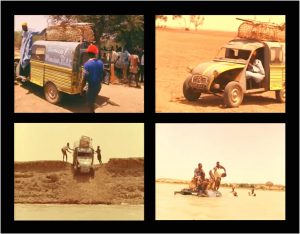
Fig. 7: Jean Rouch, Cocorico! Monsieur Poulet, 1973-1974. Color, 16 mm, 94 min. Still images. © CNRS/CFE/Jocelyne Rouch.
With Dionysos, a film from 1986 that constitutes, according to Gilles Deleuze,[ref]Gilles Deleuze, “The Powers of the False,” in Cinema 2: The Time-Image, trans. Hugh Tomlinson and Robert Caleta (Minneapolis: University of Minnesota Press, 1997), p. 151.[/ref] a veritable manifesto, Rouch’s research investigations reach their pinnacle. Friedrich Nietzsche and Giorgio de Chirico, along with ancient myths from Europe and Africa, are merrily merged together within real or imaginary ceremonies whose spectrum extends from a dissertation defense to Bacchic rites. Its main protagonist, who is the author of a thesis on “the necessity of nature worship in industrial societies,” is hired by a factory that produces automobiles. His mission is “to reenchant the factory.”
Sowing Fertile Disorder
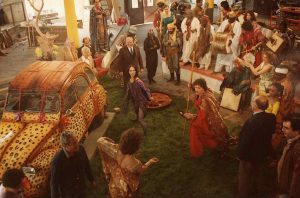
Fig. 8: Jean Rouch, Dionysos, 1983-1986. Released in1986. Color, 16 mm, 97 min. Still image. © Les Films du Jeudi/Les Films de la Pléiade. We see here the staging of a Dionysian ritual, in the middle of a factory, in front of an enchanting automobile named the “Perfumed Panther.”
Animated by a dynamic, Nietzschean view of knowledge, Rouch was always distrustful of scientific approaches that are organized in a classificatory mode. His predilection for the concept of enthusiasm—the title, moreover, of the first sound film in the history of Soviet documentary film, authored by Vertov in 1930-1931—also headed in this direction. Skeptical, indeed critical of the methods by which museum collections are presented as well as of the philosophies underlying practices of conservatorship, he saw in the medium of sound film the possibility of transmitting the life of objects in ethnographic museums and of placing them back within their context.[ref]To go further we could even advance the hypothesis that this would allow restitution of these objects to their society of origin (a lively debate right now like that of the restitution of pillaged, stolen, and appropriated objects in the context of colonialism). Rather than the original objects presented in glass cases, projections of filmed rites would be at once richer from the standpoint of knowledge and more just from a moral point of view.[/ref] Rather than classifying and filing, Rouch envisaged film as a method for animating objects but also as a tool for sowing fertile disorder. His interest in caricature, the grotesque, humor, even failed humor, and slapstick cannot be fully comprehended without associating it with his research into the phenomenon of migration, but also oral communication, improvisation, and every other open form of meaning and knowledge production. Looking at how Rouch films men and their objects, one understands that both men and objects form a system—a world—from which they could not be separated, and one comes to know that the roles can be reversed, with men becoming things and things becoming creatures. The world is inhabited by chaos. It is overflowing. And every attempt at classification may prove devastatingly amiss. Without rejecting the usage of the things produced by machines, Rouch takes an interest in mixtures, ruptures, interstices, and all that resists a predetermined ideology. Things represent a bridge between reality and the imaginary, nature and technology, the same and the other, and they would not be able to allow themselves to be instrumentalized so easily by a market. Yet it would perhaps be necessary to invent new rituals in order to resist.
Bibliography
Deleuze, Gilles. “The Powers of the False.” Cinema 2: The Time-Image. 1985. Trans. Hugh Tomlinson and Robert Caleta. Minneapolis: University of Minnesota Press, 1997.
Didi-Huberman, Georges. La Ressemblance informe ou le gai savoir visuel selon Georges Bataille. Paris: Macula, 1995.
Godard, Jean-Luc. “L’Afrique vous parle de la fin et des moyens. Jean Rouch, Moi, un noir.” Cahiers du cinéma, 94.
Hell, Bertrand. Possession et chamanisme. Les maîtres du désordre. Paris: Flammarion, 1999.
Henley, Paul. The Adventure of the Real: Jean Rouch and the Craft of Ethnographic Cinema. Chicago and London: University of Chicago Press, 2009.
Piault, Marc-Henri. “Jean Rouch (1917-2004). La ciné-transe, une pensée fertile.” Hermès, La Revue, 39:2 (2004): 210-218.
Rouch, Jean. La Religion et la magie Songhay. Paris: Presses Universitaires de France, 1960.
_____. “La caméra et les hommes”[originally published in1973], CinémAction, 81 (1996).
_____. Jean Rouch: Cinéma et anthropologie. Ed. Jean-Paul Colleyn. Paris: Cahiers du cinéma, 2009.
Ten Brink, Joram. Building Bridges: The Cinema of Jean Rouch. London and New York: Wallflower Press, 2007.
Clara Pacquet has a doctorate in Philosophy. She completed her dissertation, supervised by Danièle Cohn at the École des Hautes Études en Sciences Sociales and titled Signature et achevé en soi. Esthétique, psychologie et anthropologie dans l’œuvre de Karl Philipp Moritz (1756-1793), which was published in 2017 by Presses du réel in its “Œuvres en sociétés” series. In addition to her research on the German Enlightenment, she is interested in the arts of the twentieth century, in particular their connection with Anthropology. Pacquet has participated as a researcher in several research projects at the frontier between Aesthetics and Art History. She collaborates regularly with the reviews L’Objet d’art and Dossier de l’art. Along with Bärbel Küster, she coedited the online publication Photography and Orality. Dialogues in Bamako, Dakar and Elsewhere (Stuttgart/Berlin, 2017), which brought together filmed interviews of Malian and Senegalese artists with contributions from writers, art historians, anthropologists, and exhibition curators.
